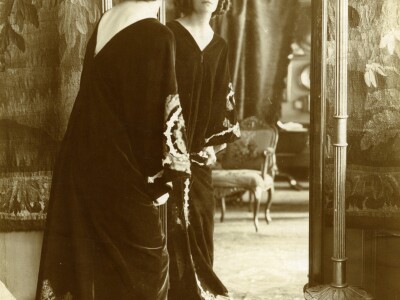Over the centuries, women artists have navigated difficult realities and made significant accomplishments by dint of their tenacity, fearlessness, resilience, and creativity.
The Obstacle Race: The Fortunes of Women Painters and Their Work, Germaine Greer’s pioneering text on the history of women artists, was aptly named.1 The obstacles women artists have encountered—and continue to experience—while trying to obtain a foothold in the art world are legion. Compounding these professional challenges are the personal adversities we all face to some degree or another: poor physical or mental health, troubled relationships, economic insecurity, faltering faith, the passing of loved ones. Some of these trials are temporary; others are lifelong battles. Over the centuries, women artists have navigated difficult realities and made significant accomplishments by dint of their tenacity, fearlessness, resilience, and creativity. Their stories, told in paint and clay and ink and a host of other media, can reach across time and space to teach us something about the art of perseverance.
The odds of Jaune Quick-to-See Smith (b. 1940) becoming a highly successful artist were not in her favor. Raised on the Confederated Salish and Kootenai Reservation in Montana by a single father who was an itinerant worker, her childhood was filled with instability. But she knew from the age of four that she wanted to be an artist and persisted towards realizing that goal. After earning an undergraduate degree, her application for graduate studies at the University of Mexico was turned down three times, but she was ultimately admitted and earned a Master of Arts at age forty.
While Quick-to-See Smith is no stranger to discrimination in the art world, she has taken these experiences and transformed them into works that call for its reorientation. She recounts, “After my first year at a community college, the professor told me even though I could draw better than the men students, that a woman could not be an artist.”2 In another art class, she was told that the golden mean was not formulated for the representation of the female body.3 Years later, she would revisit this bias in her mixed media piece, The Red Mean: A Self Portrait (1992). Using Leonardo da Vinci’s drawing The Vitruvian Man (c. 1492) as a starting point, she traced the outline of her own body—not white, not male, not European—onto a messy bed of tribal newspapers, her figure spilling untidily beyond the confines of the Vitruvian circle and cancelled out by a large red X slashed across it. The Red Mean expresses her position as an interloper in the art world, but also as an innovator. In it, she questions the assumptions undergirding the Eurocentric art world and recuperates the rich visual culture of her Native American heritage.
Similarly, Frida Kahlo (1907-1954) found a way to translate her physical and psychological hardships into some of the most compelling self-portraits of the twentieth century. She was diagnosed with childhood polio at age six, and at age eighteen she was involved in a bus accident from which she narrowly escaped with her life. Kahlo turned to art during her long recovery, and she had a special easel with a mirror installed at her bedside so that she could be her own model.
The 2018 exhibition, Frida Kahlo: Making Her Self Up, featured a number of her orthopedic corsets, which were prescribed to help ease Kahlo’s chronic pain. She used these corsets as canvases, covering them with images that brought her comfort: vibrant flora and fauna, the symbols of the hammer and sickle, and, on one, a meticulously painted fetus. These corsets stand as a powerful testament to the ways that art can succor.4 Kahlo used art to not only persevere through her own pain but also to speak to others who suffer.
Other artists have also found healing in painting their life stories. In 1969, Betye Saar (b. 1926) created A Black Girl’s Window, an autobiographical assemblage of her childhood. The bottom half features a silhouette of her face and hands, enveloped by cosmological signs and painted on glass; hers was a future open to possibility. And yet, above her visage, panes of a wooden window frame are filled with reminders of the burdens of the past that she carries: a tintype of a woman reminiscent of her Irish grandmother, a phrenological chart long used to legitimize racism, and a small plastic skeleton that alludes to her father’s death when she was five years old.
Painted at the height of the race riots, and in the year that Saar divorced the father of her three young girls, A Black Girl’s Window captures a pivotal moment for the artist and for the country. For Saar, creating art such as this is a deeply spiritual and cathartic act, and a way to work through the difficulties confronting herself, her family, and her community. In an interview last year, Saar opined: “Once you start making something with your hands, the healing starts. I call this creative grieving.”5
This concept of creative grieving is at the heart of the recent exhibition Encounters with Grief, which was created by BYU student Myleka Bevans. Framed as an exploration of the rituals of grief, the series of installations incorporates the balloons, flowers, stuffed animals, sympathy notes, and words of advice that she received after the death of her baby girl. Bevans explains that she came to understand that these expressions signified a kind of “club initiation.” She writes: “Each object was from a person who knew pain and was welcoming me into the deeper and darker aspects of life. I had entered into a part of life that allowed for emotions to be deeper, connections to be more precious, and life to be richer.”6
One of Bevans’s “cloud” installations, titled Flower Cloud, is perhaps her most powerful rumination on grief. Suspended from the ceiling, this cloud is a cluster of flower bouquets with sheets of pink and purple tissue and clear cellophane tucked into its crevices. The distended mass threatens to shed some of its weight, and on the floor below lies a mound of single stems that have escaped to form the shape of an open grave. To stand before the cloud and watch the inexorable process of grief slowly give way in the form of dropping flowers is a profoundly moving experience, made even more so in the midst of a pandemic that has made death all too palpable.
Pausing to consider the life stories and artworks of women who have faced devastating loss, chronic pain, rampant discrimination, and low odds of recognition can be therapeutic. These narratives and objects can remind us of our capacity to turn the dross of tribulation into something precious and enduring. It is possible that time spent contemplating the historical and material traces of their journeys might just provide us with what we need: a broader perspective, a welcome distraction, a bit of solace, a sense of kinship, an increase in compassion, a deeper humility, and maybe even a conviction that we too can transform our own struggles into something praiseworthy.
This article was written by Associate Professor Heather Belnap, who teaches art history and European Studies Coordinator at Brigham Young University, as well as an affiliate of the Global Women’s Studies program.
This article appeared in the Fall 2020 issue of Humanities alumni magazine.
1. Germaine Greer, The Obstacle Race: The Fortunes of Women Painters and Their Work (London: Farar, Straus, & Giraud, 1979).
2. “Jaune Quick-to-See Smith,” Elizabeth A. Sackler Center for Feminist Art, Brooklyn Museum. bit.ly/3oU0us5. Accessed October 24, 2020.
3. Quoted in Charles Giuliano, “Visiting Smith College of Art: Thoughts on Grunewald, Bouts, and Jaune Quick-to-See Smith,” Berkshire Fine Arts (24 January 2014): bit.ly/3mWsSIb. Accessed October 24, 2020
4. Frida Kahlo: Making Her Self Up, V&A Museum (June 16–November 18, 2019). bit.ly/2HZgB6O. Accessed October 24, 2020.
5. Holland Cotter, “‘It’s About Time!’ Betye Saar’s Long Climb to the Summit,” The New York Times (September 4, 2019).
6. “Encounters with Grief: Myleka Bevans,” (September 28–October 8, 2020), Gallery 303, Harris Fine Arts Center, Brigham Young University. https//bit.ly/2JwaM1j. Accessed October 8, 2020.


